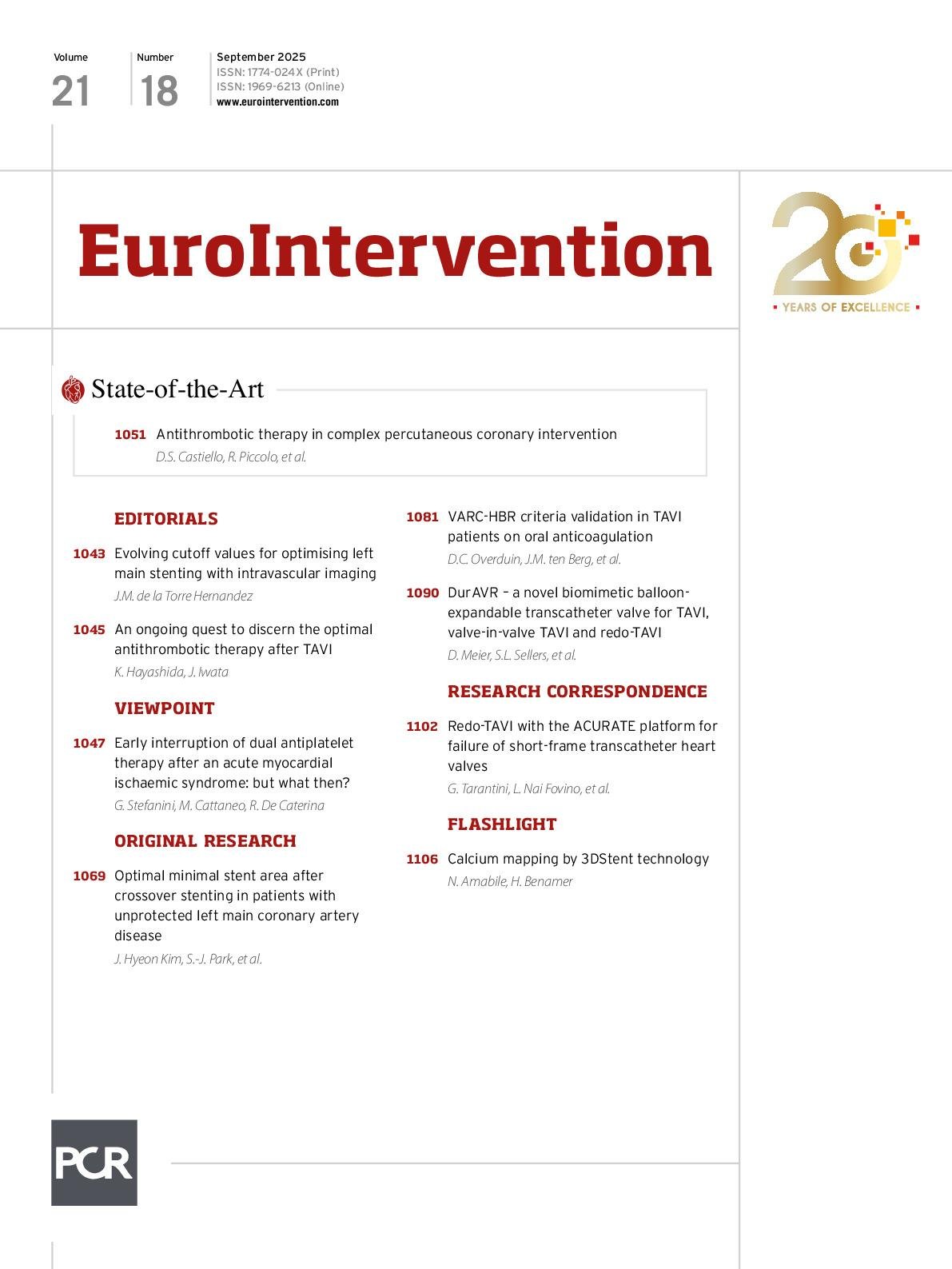In this issue of EuroIntervention, Overduin and colleagues evaluate the Valve Academic Research Consortium High Bleeding Risk (VARC-HBR) criteria1 for risk stratification and prediction of 30-day major bleeding risk in patients undergoing transcatheter aortic valve implantation (TAVI) with a concomitant indication for oral anticoagulation. The VARC-HBR criteria enabled the effective identification of three major bleeding risk subgroups in this study. Severe femoral artery calcification and tortuosity, anaemia, and conversion to open heart surgery were identified as the most contributive criteria. Patients who undergo TAVI are likely to be elderly and severely frail, and, given that periprocedural bleeding events are sometimes associated with fatal complications, bleeding risk stratification before TAVI is therefore essential. This study sheds light on current clinical practice to predict and avoid bleeding events during TAVI2.
One of the high bleeding risks in this study was severe calcification and tortuosity of the access vessels. Such poor vessel condition indicates severe arteriosclerosis, inevitably contributing to increasing not only bleeding but also thromboembolic risks. In the POPular PAUSE TAVI trial, bleeding events were more frequently observed in the periprocedural...
Sign up for free!
Join us for free and access thousands of articles from EuroIntervention, as well as presentations, videos, cases from PCRonline.com

